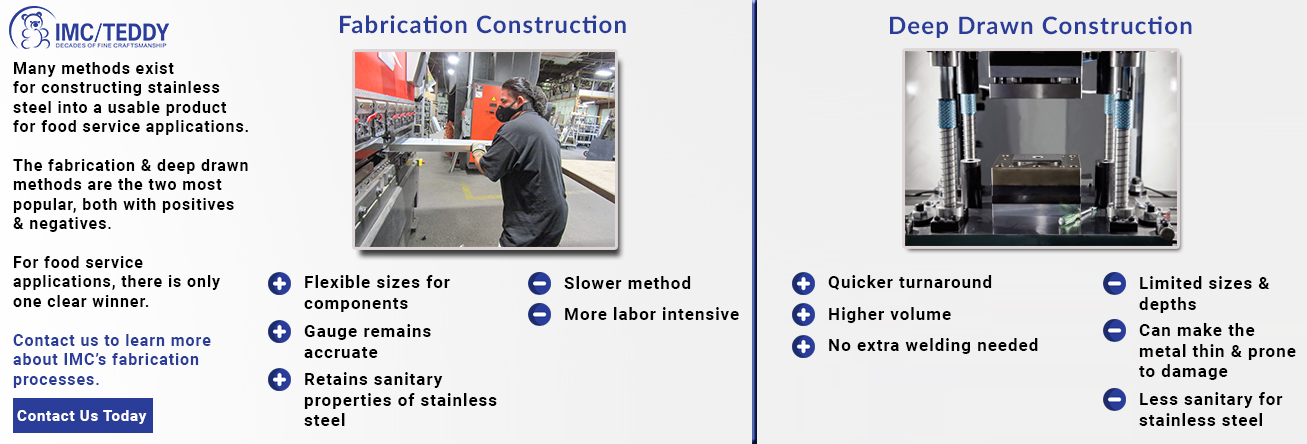The Ultimate Showdown: Fabricated vs. Deep Drawn Construction

In the stainless steel food service industry, equipment must stand up to the day-in day-out abuse 365 days per year. The strength & integrity of your equipment will simply come down to the manufacturing method during construction. There are currently two popular methods of doing this: traditional fabrication & deep drawn stamping.
What is the difference between both & which one is ultimately better for food service applications? Let’s begin the showdown.
About the Fabrication Method
The traditional method of fabricating stainless steel involves using a press brake to create precise bends into flat stainless steel sheets. The punch force is adjusted for each bend & a variety of dies are used to get the desired shape. The dies & punch are typically designed in such a way that they can be interchanged easily to accommodate a wide range of jobs.
Overall, the fabrication method is a slower, but precise method of shaping stainless steel.
About the Deep Drawn Method
Without getting too technical, think of the deep drawn method as using a high pressure cookie cutter (or stamp) to form shapes out of a flat stainless steel sheet. The whole shaping process takes place within seconds & a seamless form is created from just a single piece of sheet metal, so any extra welding is not required.
Overall, deep drawing is used as a quick, cost effective way of shaping stainless steel.
So, Who’s the Winner?
Both methods might be similar, but there are a number of considerations to take into account before determining an ultimate winner:
1. True to Size – Fabricated components must be welded together to form a complete product. This means any size or depth can be used. Deep drawn units have limited sizes (& depths) based on which die is used.
2. Gauge Accuracy – No metal is stretched during the fabrication process, so the gauge is uniform throughout the finished piece. However, metal is stretched to conform to a shaped die in the deep drawn process. This can potentially make the metal thin & prone to damage.
3. Sanitary Requirements – Stainless steel is coated in a layer of chromium oxide, which helps prevents corrosion. This important layer is kept intact during the fabrication method. However, the intense friction during deep draw forming can strip away this layer leading to a potential unsanitary final product.
For the food service industry, the traditional fabrication method seems to be a clear winner. Sizing, thickness & sanitation are three key elements in manufacturing stainless steel. The deep draw process may be quicker, but the fabrication method is the wisest choice.
IMC/Teddy manufactures all of its equipment from Type 300 series stainless steel using the fabrication method. No stainless steel is deep drawn in our factory.
We recognize that you want the best possible equipment with the most accurate sizing & highest durability all while meeting the latest sanitary guidelines. The fabrication method simply is the best choice for achieving these important goals. For IMC’s full range of stainless steel products, click here.




